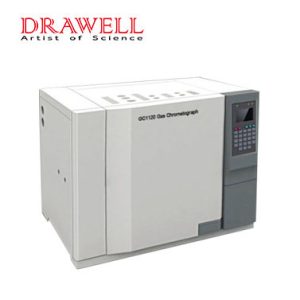Elevating Analytical Precision The Convergence of Gas Chromatography and Ion Mobility Spectrometry
In the sophisticated domain of analytical chemistry, gas chromatography (GC) emerges as a paragon of precision, enabling the meticulous separation and characterization of volatile and semi-volatile compounds within intricate matrices. Modern gas chromatography machines, or GC instruments,
exemplify engineering excellence, employing a stationary phase-coated capillary column and an inert carrier gas to partition analytes based on their differential affinities. This foundational technique, when augmented by cutting-edge detection methodologies, achieves unparalleled specificity and sensitivity, solidifying its indispensability in research and industrial laboratories.

A transformative advancement in this sphere is the integration of ion mobility spectrometry (IMS) with GC, a synergy elucidated in a seminal discourse by Chromatography Online. IMS operates on the principle of differential ion migration through a buffer gas under an electric field, imparting an orthogonal separation dimension to GC’s chromatographic resolution. This dual-dimensional approach not only mitigates co-elution challenges but also amplifies detection limits, rendering the GC-IMS hybrid system a formidable tool for analyzing ultra-complex samples, such as environmental pollutants, pharmaceutical impurities, and metabolomic profiles.
The intrinsic versatility of GC instruments lies in their compatibility with diverse detectors, yet the incorporation of IMS introduces a paradigm shift. By enabling real-time, continuous analysis of GC effluents, IMS enhances temporal resolution while minimizing signal-to-noise degradation. Furthermore, IMS’s capacity to discriminate ions by collision cross-section and charge state broadens the analytical scope, encompassing both protonophilic and electrophilic species—a feat unattainable by conventional detectors.
Innovations in miniaturization herald a new epoch for gas chromatography machines. Portable GC-IMS configurations, leveraging microfabricated columns and low-power IMS drift tubes, promise on-site deployment for applications ranging from forensic investigations to industrial hygiene monitoring. This portability, coupled with the system’s robustness against matrix interferences, positions GC-IMS as a vanguard in decentralized analytical workflows.
As the frontiers of analytical science expand, the confluence of gas chromatography and ion mobility spectrometry epitomizes the relentless pursuit of precision. From elucidating trace-level contaminants in environmental matrices to accelerating drug discovery pipelines, this hybrid technology redefines the boundaries of what is analytically attainable.
For an in-depth exploration of state-of-the-art GC systems, visit Drawell Analytical, where innovation in gas chromatography machines converges with practical application, empowering scientists to transcend conventional analytical limitations.

Comments are Closed